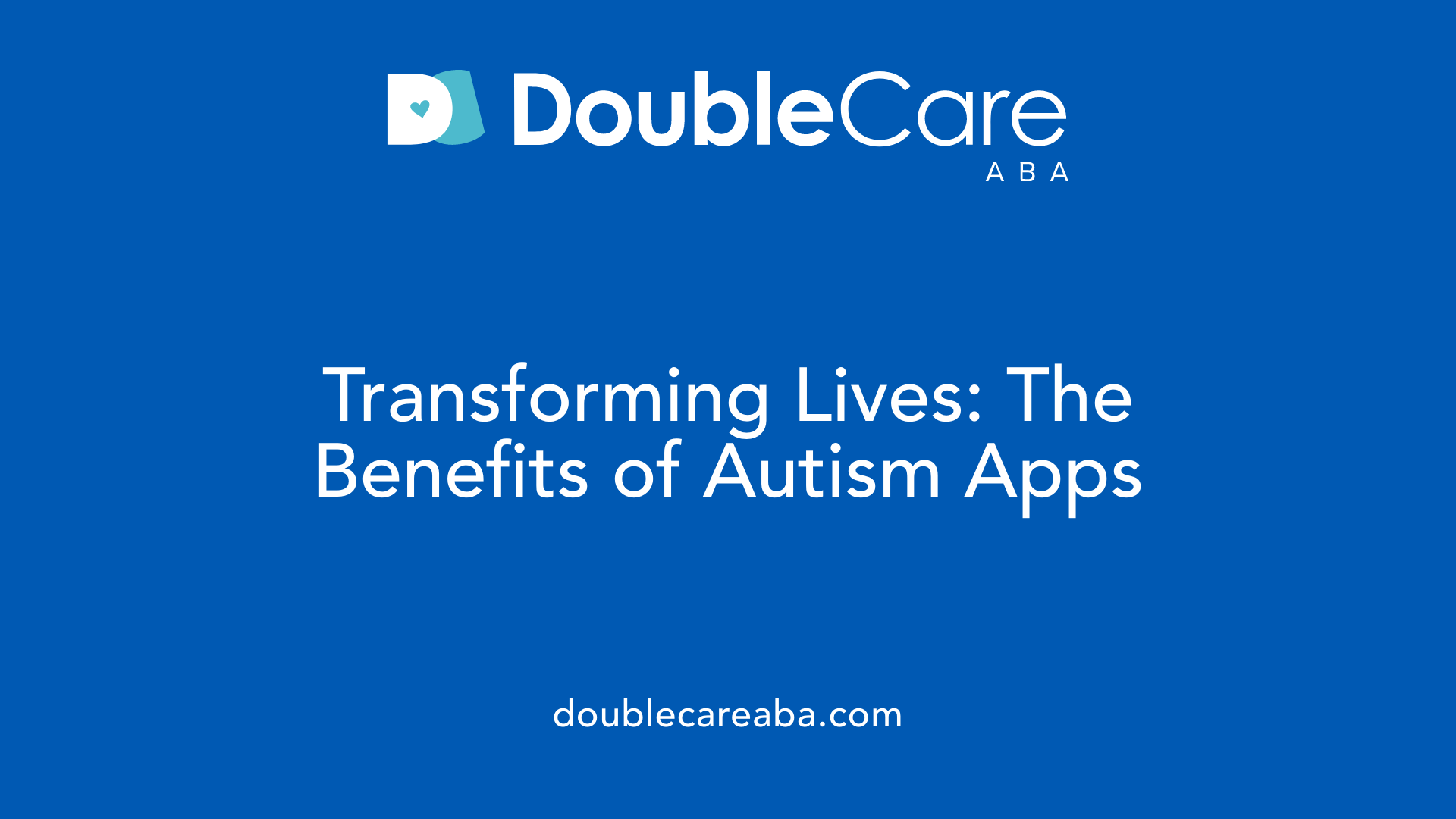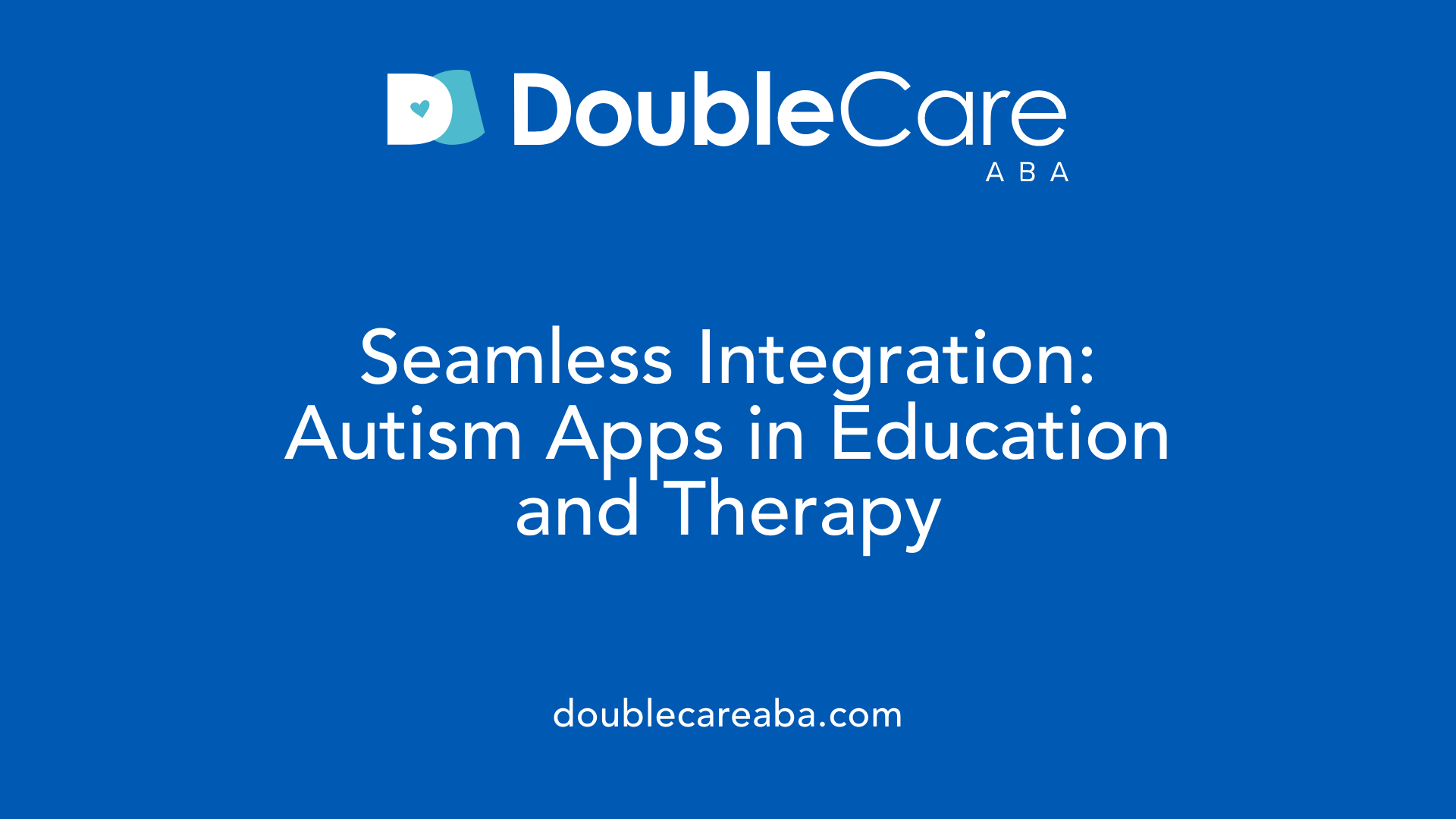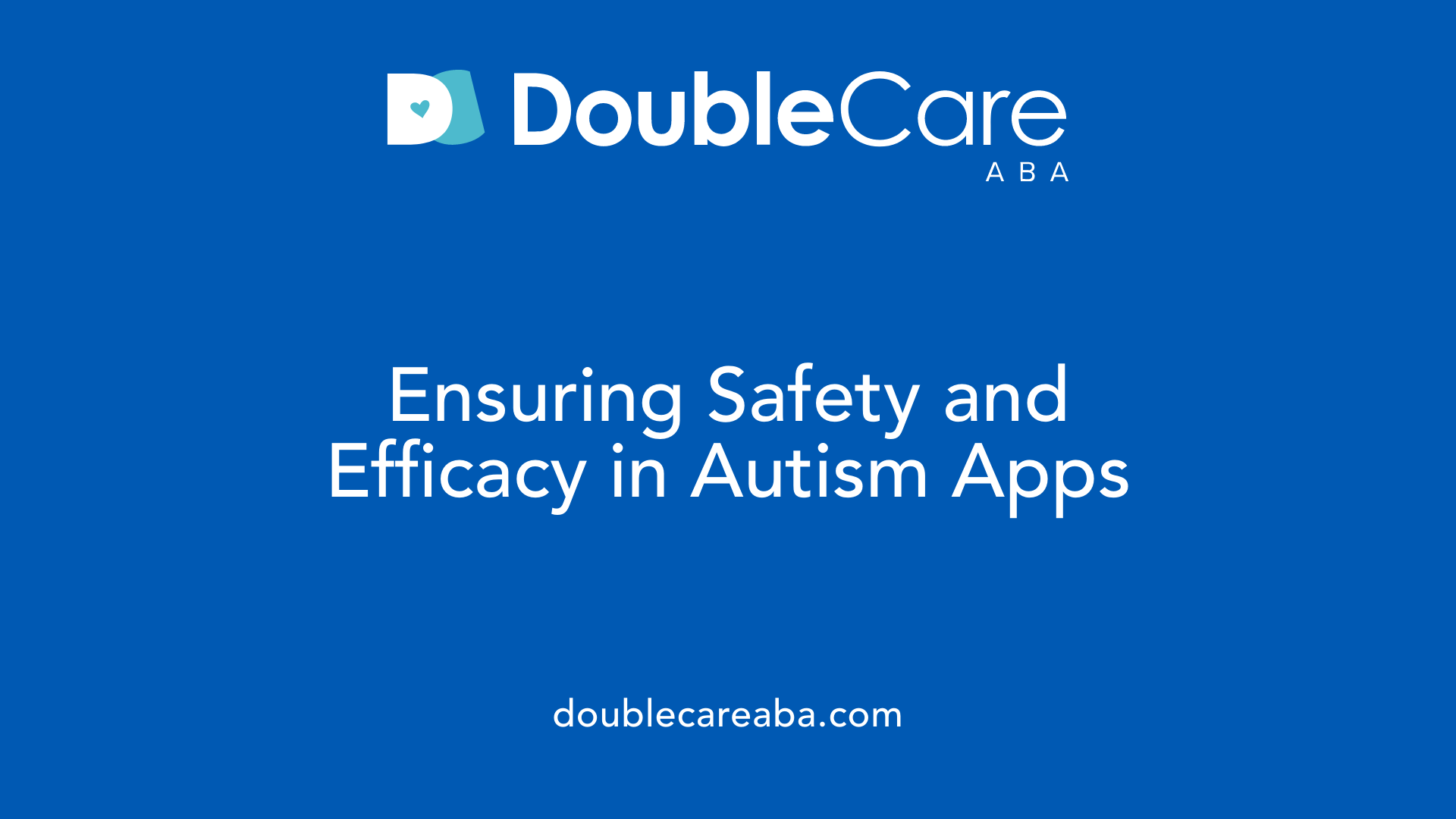Autism Apps For Children
Harnessing Technology to Support Children with Autism Spectrum Disorder

Empowering Development Through Digital Tools
Autism apps have become invaluable resources for children with Autism Spectrum Disorder (ASD), providing targeted support for communication, social skills, behavior management, and emotional regulation. These digital tools, grounded in evidence-based practices such as ABA and Pivotal Response Treatment, help children learn essential skills in engaging, personalized, and accessible ways. From communication aides to sensory calming tools, this article explores the spectrum of autism apps, their benefits, categories, and best practices for integration into educational and therapeutic plans.
Comprehensive Overview of Autism Apps for Children
What Features and Functions Do Autism Apps Offer?
Many autism apps are designed with features that support learning, communication, behavior management, and emotional regulation. Visual schedules, interactive games, social stories, and emotion recognition tools are common. For example, apps like Autism & PDD Social Stories and All About Me use visual prompts to teach social cues and routines.
Specialized apps such as Proloquo2Go and Autism iHelp focus on augmentative and alternative communication (AAC), helping nonverbal children express themselves through symbols, pictures, and voice output. Emoti based apps like Autism Emotion and Draw Emotions assist children in recognizing and understanding feelings.
Apps also incorporate routines and scheduling features, such as My Video Schedule and ChoiceWorks, which embed timers and social stories to enhance understanding of daily activities.
Additionally, sleep apps like White Noise, Go To Bed, and SleepBot help establish healthy sleep routines, an important aspect of overall well-being.
What Types of Support Do Autism Apps Provide?
Autism apps support multiple developmental areas, including social skills, communication, behavior regulation, academic skills, and daily routines. Some apps, such as Otsimo Speech Therapy and Speak Easy, focus on language development through customized exercises and vocabulary builders.
Behavior management apps like Behavior World and Zones of Regulation assist children in recognizing emotions and developing self-control. Data collection tools like Autism Tracker Lite and Proloquo2Go allow caregivers and therapists to monitor progress, track behaviors, and tailor interventions.
Educational apps such as AutiSpark and MITA foster cognitive skills, including reading, math, memory, and problem-solving. Many apps are based on evidence-based practices like ABA and PRT, ensuring that the support aligns with proven therapeutic techniques.
What Are Some Popular Autism Apps and Their Uses?
Several apps stand out due to their effectiveness and user endorsements.
| App Name | Primary Use | Notable Features | Price/Access |
|---|---|---|---|
| Proloquo2Go | AAC (communication) | Customizable symbols, voice output, broad library | Paid, subscription needed |
| AutiSpark | Educational games for ASD | Emotions, reading, math, memory activities | Free trial, subscription |
| ChoiceWorks | Routine and behavior support | Visual schedules, timers, social stories | Paid |
| SleepBot | Sleep routine enhancement | Soundscapes, sleep tracking | Free |
| Autism Tracker Pro | Behavior and mood tracking | Data dashboards, reports | Paid, subscription |
The diversity of available apps allows parents, educators, and therapists to create a comprehensive support system tailored specifically to each child's unique needs. Incorporating appropriate apps into daily routines can significantly enhance developmental progress and quality of life.
Categories of Autism Apps Covering Developmental Domains

What categories of autism apps are available to support different developmental areas?
Autism apps are designed to help children with neurodevelopmental disorders improve various skills and manage challenges through targeted features. These applications are typically grouped into five main categories, each focusing on a specific development domain.
Communication support apps are essential for children who are nonverbal or have limited speech. They often utilize symbols, pictures, and voice output to facilitate expression and understanding. Popular examples include Proloquo2Go and TouchChat HD, which enable children to communicate their needs and thoughts more effectively.
Social skills development apps aim to improve interpersonal understanding and social interactions. These apps include stories, role-playing scenarios, and games that teach children about social cues, sharing, and friendships. Apps like Social Success and Stories 2 Learn are tailored to help children practice social exchanges in a safe, engaging environment.
Emotional regulation apps assist children in recognizing and managing their feelings. Tools like Draw Emotions, Emotionary, and I Know How You Feel help children identify emotions through pictures and practice expressing them appropriately. These apps support emotional awareness, an important skill for social relationships.
Sensory support apps address sensory processing challenges often experienced by children with ASD. Calming activities, such as listening to pleasing sounds or engaging with visual stimuli, are provided through apps like White Noise, Electra, and Melody Maker. These tools help children self-regulate and reduce sensory overload.
Routine and behavior management apps promote independence by establishing daily schedules and reducing anxiety around transitions. Apps like Choiceworks, First Then Visual Schedule HD, and Zones of Regulation are used to create visual routines, set goals, and help children understand behavioral expectations. They also enable caregivers to track progress and reinforce positive behavior.
Below is a simplified overview of these categories, their functions, and examples:
| Category | Purpose | Common Apps | Additional Details |
|---|---|---|---|
| Communication | Facilitates expressive and receptive language | Proloquo2Go, TouchChat HD | Supports nonverbal children with AAC features |
| Social Skills | Enhances understanding of social norms and cues | Social Success, Stories 2 Learn | Uses stories, social scenarios, interactive exercises |
| Emotional Regulation | Helps recognize and express emotions | Draw Emotions, Emotionary, I Know How You Feel | Visual tools for emotional awareness |
| Sensory Support | Provides calming activities for sensory needs | White Noise, Electra, Melody Maker | Calming sounds, visual stimuli to reduce overload |
| Routine & Behavior | Builds routines, manages behaviors | Choiceworks, Zones of Regulation, First Then | Visual schedules, timers, behavior tracking |
In summary, these various categories of apps serve to bolster different areas of a child's development, supporting their journey toward greater independence and social competence. When selecting apps, it is important to consider the individual child's needs and work with professionals to incorporate these tools into a comprehensive plan.
The Benefits of Using Autism Apps for Children

What benefits can autism apps provide for children with developmental needs?
Autism apps offer numerous advantages that can significantly improve the lives of children with developmental challenges, especially those on the autism spectrum. These digital tools are designed to support a range of skills, from communication and social interaction to emotional regulation and daily routines.
One of the main benefits is the enhancement of communication and social skills. Many apps include augmentative and alternative communication (AAC) features, like symbol-based vocabularies and voice output, which help non-verbal children express their needs and feelings effectively. Apps such as Proloquo2Go and Autism iHelp provide customizable vocabulary options, making communication more accessible.
Support for emotional regulation and self-control is another vital aspect. Apps like Zones of Regulation and Smile at Me assist children in recognizing and managing their emotions through visual cues, relaxation techniques, and guided activities. These tools can help reduce anxiety and improve self-regulation skills.
Facilitation of independent daily routines is achieved through scheduling and organization apps like My Video Schedule and First Then Visual Schedule. Such apps provide visual supports that guide children through routines, transitions, and tasks, encouraging autonomy and decreasing reliance on constant adult supervision.
Assistive features tailored for non-verbal children include animations, customized prompts, and calming sensory activities. For example, apps like Melody Maker and Fluidity HD help children with sensory processing issues by offering calming visuals and sounds, creating a soothing environment.
The impact of these applications extends to behavioral and cognitive development. Many apps incorporate evidence-based therapeutic techniques like ABA and Pivotal Response Treatment, aiming to improve language, problem-solving, and social understanding. Educational games tested and validated by therapists nurture early literacy, numeracy, and cognitive skills, preparing children for more advanced learning.
In summary, autism apps serve as versatile tools that promote communication, emotional health, independence, and cognitive growth. They enable children with autism to participate more fully in various settings—home, school, and social environments—while offering support tailored to individual needs. Supporting children’s development through these innovative digital resources can pave the way for greater inclusion and self-confidence.
Integrating Autism Apps into Educational and Therapeutic Plans
 When incorporating autism-specific applications into educational or therapeutic routines, a systematic approach can maximize their benefits. Autism apps should be embedded within structured plans that work alongside established therapies like speech, occupational, and behavioral interventions.
When incorporating autism-specific applications into educational or therapeutic routines, a systematic approach can maximize their benefits. Autism apps should be embedded within structured plans that work alongside established therapies like speech, occupational, and behavioral interventions.
Personalized interventions often involve customizing app activities to suit an individual's unique needs. Many apps adapt their levels and content using artificial intelligence, allowing for tailored support that evolves with the child's progress. Visual supports, communication tools such as AAC (Augmentative and Alternative Communication) apps, and sensory management applications can significantly improve communication, reduce anxiety, and help children navigate sensory sensitivities.
Tracking progress is essential for effective integration. Data collection apps like Autism Tracker Pro or Behavior databooks enable caregivers and clinicians to monitor behavioral patterns, skill acquisition, and response to intervention. These insights inform decisions about modifying strategies to optimize growth.
Supporting traditional therapies is another vital aspect. Apps designed for early literacy, social skills, and emotional regulation complement face-to-face therapy sessions. For instance, social stories apps and emotion recognition games can reinforce skills learned during therapy.
Collaboration among parents, educators, therapists, and other professionals is critical for successful app integration. Regular communication ensures that digital tools align with each child’s individualized plan and that all stakeholders are informed about progress.
Finally, proper training and best practices are necessary to maximize technology's efficacy. Caregivers and educators should be guided on selecting appropriate apps, setting realistic goals, and evaluating outcomes. When used effectively within a scientifically supported framework, autism apps can substantially enhance learning, communication, and behavior management, leading to better developmental trajectories.
Evaluating the Safety and Effectiveness of Autism Apps
 What evidence exists regarding the safety and effectiveness of autism apps for children?
What evidence exists regarding the safety and effectiveness of autism apps for children?
Research on the safety and positive impact of autism-focused apps is gradually growing but remains limited in scope. Many well-crafted applications incorporate evidence-based techniques such as visual supports, immediate feedback, and customizable content, which have shown promise in helping children with ASD develop essential skills.
For example, some studies highlight improvements in reading, communication, and social interaction, especially when apps are designed according to pedagogical and therapeutic principles. A notable app tested over a three-year trial with over 6,000 children demonstrated significant gains in language scores, confirming that scientifically grounded digital tools can facilitate learning.
However, it is crucial to recognize that while early results are promising, comprehensive, peer-reviewed research is still needed to fully endorse the safety and widespread effectiveness of these tools. Caregivers and professionals are advised to follow guidelines on safe media use, such as setting appropriate screen time limits, choosing apps aligned with individual needs, and routinely monitoring behavioral responses.
In summary, initial evidence shows potential benefits, but ongoing, rigorous studies are necessary to establish defined safety standards and proven effectiveness for autism apps in diverse populations.
Language Therapy Apps Supporting Children with Autism
Are there specific apps recommended for language therapy for children with autism?
Yes, several apps are recommended to support language development in children with autism. One standout is the 'Mental Imagery Therapy for Autism (MITA),' which boasts strong scientific backing. During a comprehensive 3-year trial involving 6,454 children, MITA demonstrated that users showed a remarkable improvement in language scores—averaging 2.2 times greater progress than those who did not use the app. These improvements were statistically significant, indicating a real benefit from the app.
MITA employs exercises rooted in established therapies like ABA (Applied Behavior Analysis), Pivotal Response Treatment, and language therapy principles. Its activities focus on visual recognition, understanding directions, and verbal interactions, supporting children from early childhood through long-term use. The app adapts to each child's progress, gradually increasing difficulty to foster continuous learning.
Besides MITA, other popular language apps include 'Social Learning Platform from Everyday Speech,' 'Conversation Therapy,' and 'Proloquo2Go.' These tools help children develop social language skills, inferencing, and effective communication using AAC (Augmentative and Alternative Communication) systems. Additionally, the 'Autism Speech and Language' app provides valuable resources for parents, empowering them to facilitate language development at home.
The effectiveness of these apps is supported by research and clinical studies, demonstrating their role as valuable supplements to traditional therapy methods. When used alongside professional guidance, these tools can markedly improve communication skills and foster greater independence in children with autism.
Supporting Children’s Growth with Tailored Digital Tools
The landscape of autism apps offers a diverse array of resources designed to enhance communication, social skills, emotional regulation, and daily routines. Selection should be based on individual needs, developmental goals, and professional guidance. Integrating these apps into learning and therapy frameworks can bolster progress, foster independence, and strengthen social participation, ultimately empowering children with autism to reach their full potential. Ongoing research and advancements in this field continue to improve the safety, effectiveness, and accessibility of digital supports, making them an integral part of comprehensive autism care.
References
- Helpful Apps and Websites - Autism Spectrum Disorders Clinic
- Kids Autism Games - AutiSpark on the App Store - Apple
- Autism apps | Healthify
- Best Autism Apps for kids on iPad, iPhone and Android in 2024
- Language Therapy for Children - Apps on Google Play
- Apps for Children with Autism and Aspergers - Reading Rockets
- List of Apps-Association for Science in Autism Treatmen
















